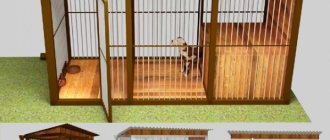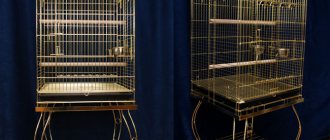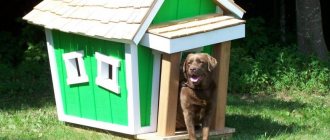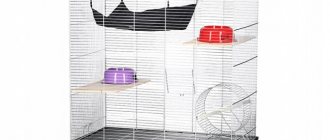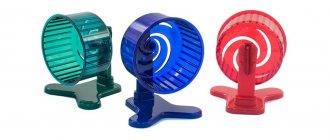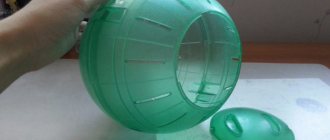Quail is a popular domesticated farm bird that began to be raised decades ago. It is bred to produce eggs and meat - both products are considered delicacies, have a high cost and a delicate taste. Most varieties of quail are quite small and require appropriate housing conditions and high-quality nutrition. Next, you will learn about what cages for these birds should be like and how to make them yourself. The main materials used to perform the work and drawings will also be considered.
How to calculate cell sizes?
Depending on the livestock that you plan to keep, it is necessary to calculate the size of the future home for the quail. On average, 1.5-1.7 dm² should be left per quail. Typically, a “family” of 5-6 hens and one male is selected for rearing and breeding.
If the purpose of rearing is to obtain eggs, you can group laying hens of 20-25 individuals in one cage. For fattening cockerels for meat, the scheme is similar, but you should take into account possible fights and isolation wards for particularly violent individuals.
How to resettle birds:
- Newborn chicks up to 10 days old.
- Young animals - up to one and a half months of age.
- Laying hens.
- Males for meat purposes.
- Parent groups.
For day-old chicks, a cardboard box with additional lighting is usually allocated. Subsequently, the grown chicks are moved to a separate room (brooder), separate from the adults.
The mesh cells for the floor and walls must be selected based on the size of the chicks. It is imperative to use additional lighting and heating of the cage.
For newborn chicks, it is advisable to control the ambient temperature of at least 25-30 degrees Celsius. For convenience, a thermoment is installed inside the burger.
Mandatory requirements for arranging cages
To understand in more detail the necessary equipment and individual elements of cages, you should know the basic rules for keeping quails.
To keep birds, the following requirements must be met:
- A feeder to which all birds should have free access.
- For the drinking bowl, you can use a cut plastic bottle or a ready-made container.
- Nests are built if raising quails involves hens hatching eggs on their own.
- Trays for collecting eggs.
- Heating the housing area in winter. Temperatures below 15 degrees have a negative impact on egg production and the health of birds.
- The duration of daylight should be at least 10 hours. For these purposes, additional lighting can be provided.
Feeders and drinkers can usually be purchased over the counter in a wide range. If you want to save money, or if you are talking about arranging non-standard size cells, you can make this equipment yourself.
When placing feeders, you should take into account the possibility of free access for all birds. It is also necessary to allocate enough space for the drinking bowl; for large cages it is better to equip several places for food and water intake at once (usually on the sides of the cages).
Useful tips for choosing a room: what you need to pay attention to
- Your quail farm can be located anywhere. You can arrange it at your dacha, but such a farm will be seasonal. Also suitable for these purposes are a country house, a specially equipped garage and, finally, an apartment.
- Good ventilation is a must. Birds need fresh air. Without this, they may not lay eggs well and often get sick. For 1 kilogram of bird weight you will need 1.5 sq.m./h in winter and 5 sq.m. m/h in summer.
- Make sure there are no drafts in the quail room. Birds are sensitive to drafts. If you suddenly notice that the floor of the cage is strewn with feathers and there are fewer eggs every day, you can rest assured that drafts are to blame. Insulate the room thoroughly.
- Birds love light, but not very bright. If you keep them in bright light, they will become excited and can destroy each other. A fluorescent lamp will be enough for them. Light mode: 17-18 hours. It is acceptable to use a 40 W lamp.
How to choose a location?
Quails feel great even with minimal comfort, and the cage itself does not take up much space. At the same time, when choosing a place for placement, it is necessary to provide for several conditions.
Requirements for choosing a place for quail:
- No direct sunlight. Birds can overheat and even get sunstroke. For temporary darkening, you can simply cover the top with a thick fabric, leaving space on the side for ventilation.
- Quails really don’t like drafts and will grow and develop poorly.
- The optimal temperature for keeping is from 15 to 25 degrees Celsius.
In addition, it should be taken into account that egg production is very negatively affected by strong noise and stress. It is advisable to provide the birds with maximum peace and quiet, so it is not recommended to keep quails in a barn with other animals, especially noisy ones.
General rules for making a cage
Schemes and drawings of finished cells can be seen in the attached photos. In addition, it is worth considering the available space and the preferred number of livestock.
Things to take note:
- Cells can be arranged in several tiers. The first tier should be approximately 40 centimeters above the floor. The height of the latter is determined based on ease of maintenance, but it is not recommended to install the cage right up to the ceiling, especially in small rooms.
- The height of the cage should not exceed 25-30 centimeters. Birds love to jump, so in larger cages they can accidentally injure themselves or injure their relatives.
- The floor in the cage must be made with a slight slope (about 7-8 degrees) forward. This will make it easier to collect eggs and clean up after the birds.
- For high productivity, birds need to have at least 10 hours of daylight per day. Quails also do not tolerate cold well, so for winter maintenance it is necessary to place the cages in a heated barn.
Experienced breeders recommend placing a deep tray at the bottom of the cages, and making the floor itself from a mesh with medium cells (but no larger than the size of eggs). This way, droppings and feathers will fall into the tray, which will make cleaning the cages much easier.
Useful tips
Quails that have reached the age of one month are considered broiler. When building a cage for them, you should adhere to certain aspects:
- the walls of structures are made of mesh or lattice;
- It is allowed to use a floor net with large cells, since the birds are large and will not fall through the holes;
- for broilers there is no need to install a brooder;
- The best materials for the production of cells are considered to be wood or metal. In this case, the frame is no longer required;
- Low cages should be used in which the bird will move less, thereby gaining weight faster.
Did you know? In 1990, quail embryos were sent into space. These birds were the first to be born in outer space.
How to make a cage with your own hands?
Typically, cages are made of plywood or galvanized mesh. The second option is much easier and cheaper, but you need to choose based on your capabilities.
How to make a wooden cage:
- Build a frame from plywood or chipboard. The floor must be sloped forward. The end of the floor should extend beyond the cage and end with a stopper. This will be the egg compartment.
- Cover the inside with galvanizing to prevent birds from pecking the walls. It is also advisable to make a pallet from galvanized steel.
- Cut out the necessary holes for the drinker and feeder, make several ventilation slots.
- Place the door on the curtains. If the cells are located in several tiers, the door is made at the front. In case of single placement, it is better to make curtains on top.
- Provide adequate lighting and, if necessary, heating.
An all-wooden structure usually does not withstand active use well, so it is better to make a combined option. To do this, it is necessary to make a frame from beams, and the walls are made from metal mesh. No less popular is the method of making quail cages entirely from mesh.
How to make a cage from metal mesh:
- It is advisable to choose a material that is sufficiently hard and dense, because a soft mesh will quickly become unusable.
- The mesh sheet is folded in three places, forming a rectangle. Also, do not forget about the slope and limiter for eggs.
- You can also make mesh walls on the sides by securing suitable pieces with wire. You can also make the ends from plywood or chipboard by attaching the mesh using corners.
- If the length of the cage is more than 60 centimeters, it is advisable to make a stiffening rib in the middle from a block of suitable cross-section.
- For the door, simply cut the wire and attach it to the curtains.
- For the feeder and drinker, it is also necessary to cut holes, thoroughly cleaning the burrs.
A cage made of metal mesh has undeniable advantages, because it can be made not only of any size, but also show your imagination by creating a multi-tiered structure.
The best options from the manufacturer
Of course, the easiest way to get a quail cage is to purchase it ready-made in specialized stores. Fortunately, today manufacturers offer a huge number of products, among which you can easily choose the best option, taking into account design features, purpose, and cost.
The TOP 5 most popular and in demand factory designs include:
- KPA-1 — a multi-tiered, multi-sectional industrial structure on a steel frame, designed for professional bird breeding. Its capacity is 1100 heads. The product is equipped with a drip eliminator, feeders with high sides, drinking bowls, a manure removal system, a tray, and an egg collector;
- Poultry Cage - a collapsible, compact design used for raising quails and raising chickens. Holds up to 27 heads. Made of durable galvanized mesh with cells 25x25 mm on the walls and 6x6 mm on the bottom.
- KP-10 - a convenient, practical, safe product made of a durable metal frame and galvanized sheets. Designed for 10 heads, but it is possible to add several tiers. The main advantages of the design are: capacity, strength, durability, corrosion resistance. The cage is additionally equipped with nipple drinkers, feeders, an egg collector, and a tray for collecting litter;
- KP-30 — a single-tier cage for 30 heads, equipped with nipple drinkers and hanging feeders. It is characterized by good capacity, compactness, ease of assembly, high quality and safety of materials, the ability to easily increase the number of tiers as the number of livestock increases;
- KP-60 — a convenient, two-tier structure made of galvanized steel, designed for raising 60 individuals. The cage is supplemented with nipple drinkers and hanging feeders. The product is easy to use, easy to transport and install in any place, and has a long service life;
- "Simple Solution" cell - modular, two-tier design, made of galvanized steel, which can accommodate up to 120 heads. It has the following advantages: easy to install, excellent for installation in small areas, quickly cleaned, and can be supplemented with new modules.
How to make a quail cage from plastic boxes?
You can build a room for keeping quails almost free of charge, using available materials, in particular, plastic “vegetable” boxes.
How the work is carried out:
- You need to prepare three boxes of the same size. One of them will serve as a frame, the second is used instead of a pallet, and the third is used to make the ceiling and lid.
- The cage body should be about 30 centimeters high. The remaining boxes can be lower or higher, the main thing is that the dimensions around the perimeter match.
- The boxes are joined together and secured with wire. There is a hatch in the top drawer for birds to move in and for further care.
- A feeder and drinking bowl are attached to the side.
A standard size box makes a cozy home for 15-20 individuals. Brood quails can be placed in such structures and can also be used for raising birds for meat.
Keeping young animals
Cages for young animals have almost the same design as for adult re-rafts. The only differences are the height of the cage and the lack of floor slope. To raise quail, a cage height of 15 cm is sufficient.
How to make a cage for 20 heads?
The best option for raising birds for your own needs would be to purchase 20 birds. Even a novice farmer, as well as breeders at home, can grow such a quantity. The cage will not take up much space, and the number of eggs will be sufficient not only for family use, but also for retail sale.
The size of the cell can be varied. On average, a space of 60x70 centimeters is needed for comfortable living of 20 quails.
The cage material can be chosen at your discretion. A combined cage made of a wooden frame and mesh walls showed the greatest strength and durability.
Such a structure will last for more than one year. At the same time, a cage made of coarse mesh will be a more budget-friendly model that is easy to manufacture. The production time and cost of such a design will be several times less, so this is an ideal option for hobbyists to decide on the advisability of further growing quails.
In addition, you can build a cage from plywood using old furniture, boxes, and simply waste building materials. The floor in such a room is also made of mesh, this will protect the birds from outbreaks of diseases, and will make it easier for the novice farmer to care for and clean the cage.
In addition, such structures are preferable for cold climates, because plywood easily warms up and protects the inhabitants from drafts and sudden drops in temperature.
Which design is suitable for an apartment?
Any design for 10-20 heads is suitable for an apartment - it is inconvenient to install a large cage. Experienced poultry farmers recommend frameless blocks and batteries for indoor bird rearing, but you can also make wooden boxes and blocks from plastic containers. The main thing is that the birds have enough space, the room is dry and well lit, nothing makes it difficult to care for the young and adults.
Consider ventilation - the birds themselves need it to maintain health and you personally need it to avoid the appearance of unpleasant, too strong odors.
Quails can also be kept in an apartment. For these purposes, you can use all types of homemade cells.
Making a cage for breeding more than 50 animals
Such structures require longer preparation. Usually this number of birds is enough to sell eggs and meat on the side.
Usually the frame is made of a metal profile, since the weight of the structure with its inhabitants will be quite impressive.
The dimensions of the cage should be approximately 70×170; it is advisable to divide the area of the room into two or three sections. This will not only make it easier to supply food and water, but will also prevent possible discomfort for the inhabitants. In general, it is undesirable to keep more than 30 individuals in one cage to avoid crowding and fights.
The frame should be located at a height of approximately 80 centimeters from the floor. This precaution concerns not only the ease of caring for birds, but also protects them from drafts and possible rodent attacks.
It is also necessary to make several cleaning trays to make it easier to care for and maintain cleanliness in the cages. The walls and roof are made from any convenient materials: mesh, plywood or welded metal grating. The floor is made of mesh of a suitable size with a mandatory forward slope for rolling eggs.
If the structure is located in several tiers, the pallet of the upper cage should not stand directly on the roof of the previous one. For the convenience and comfort of the birds, it is necessary to leave a free gap, especially if we are talking about a solid roof.
The hatch for placing birds must be made on the side with a mandatory latch for safety. Drinkers and feeders are located on the side of the cages. A good option is to attach a plastic pipe cut lengthwise with wire with plugs on both sides.
If a fine mesh net is used, it is necessary to ensure free access for birds, for which holes of a suitable diameter are cut in it. All sharp edges and ends of the wire must be carefully trimmed and cleaned to prevent accidental injury.
If the room for keeping quails is small, heating can be done with infrared or incandescent lamps. For large buildings, you will have to consider autonomous heating using a boiler, stove or heater.
